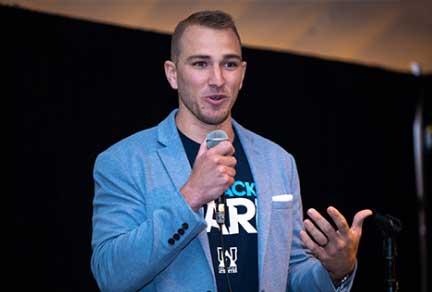FDA’s new priority voucher review program: Potential implications and next steps for sponsors
 This blog is part of The Regulatory Navigator series, where we explore the evolving regulatory landscape with actionable insight from Parexel's experts, sharing their experience to maximize success for clinical development and patient access.
This blog is part of The Regulatory Navigator series, where we explore the evolving regulatory landscape with actionable insight from Parexel's experts, sharing their experience to maximize success for clinical development and patient access.
Published June 20, 2025
With the introduction of the “Commissioner’s National Priority Voucher” (CNPV) program, the FDA aims to reduce the New Drug Application (NDA) and Biologics License Application (BLA) review timelines, as well as streamline the marketing application review process. In a press release issued June 17, the agency stated that “the new voucher may be redeemed by drug developers to participate in a novel priority program by the FDA that shortens its review time from approximately 10-12 months to 1-2 months following a sponsor’s final drug application submission.”1
An overview of the CNPV program
Starting with a one-year pilot phase, the program will offer a limited number of vouchers to companies aligned with U.S. national health priorities, including those developing drugs intended to address health crises, deliver innovative cures, meet unmet public health needs, and increase domestic drug manufacturing.
The voucher, which is non-transferable and must be used within two years of receipt, is set to offer benefits including:
- An expedited FDA review process: A reduction of the NDA/BLA review period to just 1-2 months following the final drug application submission.
- A team-based review: Convening a multi-disciplinary team of expert scientists and physicians from various FDA offices for a comprehensive, one-day "tumor board style" meeting.
- Opportunity for early submission: The CMC portion and draft labeling must be submitted 60 days before the final NDA or BLA, with early submission also permitted for other sections of the application.
- Enhanced communication: When the CNPV is submitted during the IND phase, FDA will provide interim reviews and prompt communication. Companies can also expect ongoing communication with FDA during the 1-2 month review period, and must be available with rapid responses to agency enquiries.
- Potential for accelerated approval: The agency may also grant accelerated approval if the product meets the applicable legal requirements (but this is not an automatic feature of the program).
The CNPV is distinct from existing expedited designation programs (Fast Track, Breakthrough Therapy, accelerated approval, and priority review) and voucher programs (tropical diseases, medical countermeasures, and the recently expired rare pediatric diseases program), although does utilize aspects from these. The CNPV can be applied to drugs in any area of medicine at any stage of FDA review but doesn't currently apply to devices or combination drug-device applications.
As additional information about the CNPV program emerges, we will seek to understand –
- Whether qualification will be based on specific diseases and conditions that reflect "national health priorities", or on company goals and product pipelines that align with the priorities: Various government agencies have defined different health priorities, such as those described by the HHS in its restructuring announcement, under Healthy People 2030, and identified by the US Surgeon General.2 However, it is currently unclear if these will also be prioritized for the CNPV program.
With other expedited and priority review voucher programs, qualification is based on the types of diseases or conditions that a drug is intended to treat and the characteristics of the drug, both of which are defined in policy or law.3-5 For example, expedited designation programs apply to drugs intended to treat serious diseases or conditions, as defined in FDA regulations. - What components of the other expedited programs will be incorporated into the CNPV program: We know that three components under the CNPV are rolling submission and review, intensive guidance and communication, and potential for accelerated approval. What remains unclear is the extent of data that may comprise an application under CNPV review. The announcement suggests that the review of finally submitted NDA/BLA sections will be performed by a team that is smaller than that currently assigned to marketing applications, which in turn suggests that less (clinical) data will be reviewed to reach a decision in 1-2 months.
Additionally, the other expedited programs allow for designation based on preliminary findings of drug benefit.3 Assuming this is also a feature of the CNPV program, and because the FDA is striving to make drugs available even sooner6-7, this could potentially result in approval of marketing applications on the basis of very early signs of efficacy and safety, such as after completion of phase 1 and proof-of-concept clinical studies, or mechanistic and phase 1 studies.
Under other expedited programs, rolling submission requires that each section is complete before being provided for review. Also, under FDA law and policy, marketing applications must be deemed complete in order to be filed for agency review.8 The CNPV announcement implies that incomplete applications or those with insufficient information may still be reviewed, but the review time may be longer than two months in order for companies to provide the necessary information. - Who will review and approve the CNPV marketing application: Typically, a multi-disciplinary team from across different FDA functional areas reviews a marketing application, with the decision about approval made by the director of the review division that has oversight responsibility for the NDA/BLA. The team that reviews the marketing application is usually the same team that evaluated the drug during the investigational (IND) phase.
It is currently unclear whether these same approaches will apply to the CNPV review process, and potentially with a smaller team. - The role of postmarketing studies in the approval decision: Commissioner Makary has previously emphasized the value of real-world data (RWD) from the postapproval period to evaluate the clinical effects of drugs9, and to possibly speed drug approvals. Consequently, and if the CNPV submission will include only preliminary clinical information, the subsequent marketing approval may include postmarketing requirements for RWD studies to confirm clinical benefit and assure safety. The role of REMS to manage any uncertainties about drug safety is also to be determined.
- The implications of earlier review of the CMC data: Technically, because both CMC and nonclinical studies can sometimes be completed before the clinical trials are concluded, these sections of the application could be submitted and reviewed prior to the clinical data. However, because these areas are interrelated, nonclinical studies impact clinical safety data interpretation, and clinical pharmacology data can impact conclusions about the drug product profile. Therefore, depending on the clinical findings under the CNPV review, FDA conclusions about the CMC and nonclinical data may have to be reconsidered.
Conversely, an important advantage of earlier CMC review is the potential to start the manufacturing site inspection process sooner than under the current NDA/BLA review process.
Next steps for organizations interested in the CNPV program
This initiative reflects the FDA's commitment to modernizing regulatory frameworks and creating more efficient approval processes; and we eagerly await additional detail on the scope, review and application process. In the meantime, there are actions that potentially interested companies can take to prepare:
- Explore if and how your drug development program aligns with the qualifying CNPV national health priorities: An explanation of how your drug will mitigate or cure disease that represents a health crisis, or increase domestic manufacturing is likely to be required as part of the CNPV submission process.
- Assess the maturity of your program and its data: Due to the rapid FDA review process, the CNPV program necessitates completed CMC and nonclinical studies, as well as clinical data showing, at a minimum, favorable safety and good promise of clinical benefit.
- Begin to consider your rapid response team: The shortened marketing application review time will very likely require sponsor responses to FDA information requests within hours. A well-defined, well-organized, and well-rehearsed internal team will be essential to ensure prompt communication with FDA during their review.
- Have a plan for post-approval studies: Companies considering a CNPV submission should expect to plan for post-approval efficacy evaluation, in addition to routine pharmacovigilance. Evaluations leveraging RWD will likely be important.
- Start conceiving your inspection readiness: With earlier submission and review of CMC data, FDA inspection of manufacturing sites could happen sooner. Additionally, clinical trial site inspection may occur earlier and within the much-shortened FDA review period. Sponsors and their vendors need to prepare accordingly.
- Be prepared for prompt market launch: Inherent to the CNPV program is earlier access to medicines for patients. To maximize the benefit of the CNPV review, companies should be prepared to launch their drug shortly after approval.
The CNPV program represents an opportunity for sponsors to accelerate their drug development timelines and potentially bring innovative treatments to patients faster. However, navigating this new program will require additional information gathering, careful planning, robust data management, and expert regulatory strategy. As the FDA continues to refine and implement this initiative, sponsors should proactively assess their readiness and consider how to optimize their development programs to take full advantage of the CNPV's benefits.
With a team of 1,300+ regulatory specialists, including former regulators from agencies across the world, Parexel has the knowledge, insights, and technology-enabled processes to accelerate and streamline your drug development journey. With experience in more than 110 countries, we provide strategic regulatory advice, proactively identify and mitigate risks and navigate the ever-evolving regulatory landscape – including how to utilize new novel priority programs announced by FDA. Please get in touch, we’re always available for a conversation.
References
1. U.S. Food and Drug Administration. (June 17, 2025). FDA to Issue New Commissioner’s National Priority Vouchers to Companies Supporting U.S. National Interests | FDA
2. U.S. Department of Health and Human Services. (March 27, 2025). HHS Announces Transformation to Make America Healthy Again.
3. U.S. Food and Drug Administration. (May 2014). Guidance for Industry Expedited Programs for Serious Conditions – Drugs and Biologics.
4. U.S. Food and Drug Administration. (Oct 2016). Tropical Disease Priority Review Vouchers Guidance for Industry.
5. U.S. Food and Drug Administration. (April 28, 2025). 21st Century Cures Act MCM-Related Cures Provisions.
6. BioSpace. (April 21, 2025). Makary Discusses Expedited Rare Disease Approvals Pathway, Public Distrust in New Interview.
7. Kelly, M. (April 2025). Dr. Marty Makary Responds to Critiques From Former Top FDA Vaccine Official Over Direction of Agency [Video]. YouTube.
8. U.S. Food and Drug Administration. (December 2017). Refuse to File: NDA and BLA Submissions to CDER Guidance for Industry. Retrieved from https://www.fda.gov/files/drugs/published/Refuse-to-File--NDA-and-BLA-Submissions-to-CDER-Guidance-for-Industry.pdf
9. Citeline. (June 16, 2025). Post-Approval Real-Time Monitoring Will Help Approval Standards, US FDA's Makary Says.
Disclaimer: Parexel provides the information contained in this document for educational purposes only. The information does not constitute legal or regulatory advice. Readers should not act upon this information without seeking advice from a professional adviser.
Related Insights
Webinar
Global trial expansion: Navigating Australia & LATAM's evolving clinical research landscape
Dec 2, 2025
Webinar
EU-CTR: Preparing for trial transition
Nov 30, 2023
Webinar
Assessing appropriate use of ECAs in clinical trials
May 28, 2023
Blog
Celebrating 40 Years of Rare Disease Progress: WODC Highlights
Jun 6, 2023
Blog
Population variability: important considerations in vaccine development
Jun 14, 2023
Whitepaper
How to prepare for Policy 0070: Challenges and opportunities for clinical data publication in the EU
Jun 28, 2023
Article
The technologies that are reshaping biotherapeutics manufacturing, an EU perspective
Jul 6, 2023
Blog
Ensuring future success in a new market by delivering a robust safety database solution
Aug 4, 2023
Whitepaper
Optimizing the Route to Regulatory Approval for a Novel Vaccine
Aug 18, 2023
Article
Australia: The Regulatory and Reimbursement Environment
Aug 28, 2023
Whitepaper
Scientific Validity Reports: a mandatory requirement for In Vitro Diagnostic Regulation (IVDR)
Sep 19, 2023
Blog
Assessing the need for comparative clinical trials in biosimilar development programs
Sep 21, 2023
Related Insights
Webinar
Global trial expansion: Navigating Australia & LATAM's evolving clinical research landscape
Dec 2, 2025
Webinar
EU-CTR: Preparing for trial transition
Nov 30, 2023
Webinar
Assessing appropriate use of ECAs in clinical trials
May 28, 2023
Blog
Celebrating 40 Years of Rare Disease Progress: WODC Highlights
Jun 6, 2023
Blog
Population variability: important considerations in vaccine development
Jun 14, 2023
Whitepaper
How to prepare for Policy 0070: Challenges and opportunities for clinical data publication in the EU
Jun 28, 2023
Article
The technologies that are reshaping biotherapeutics manufacturing, an EU perspective
Jul 6, 2023
Blog
Ensuring future success in a new market by delivering a robust safety database solution
Aug 4, 2023
Whitepaper
Optimizing the Route to Regulatory Approval for a Novel Vaccine
Aug 18, 2023
Article
Australia: The Regulatory and Reimbursement Environment
Aug 28, 2023
Whitepaper
Scientific Validity Reports: a mandatory requirement for In Vitro Diagnostic Regulation (IVDR)
Sep 19, 2023
Blog
Assessing the need for comparative clinical trials in biosimilar development programs
Sep 21, 2023



